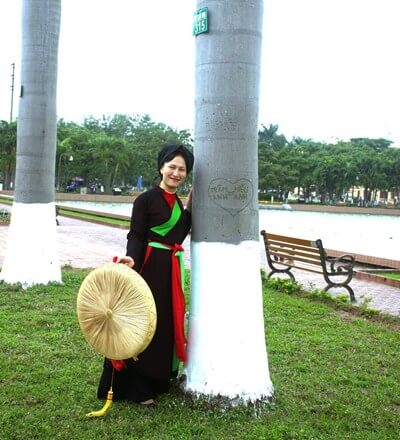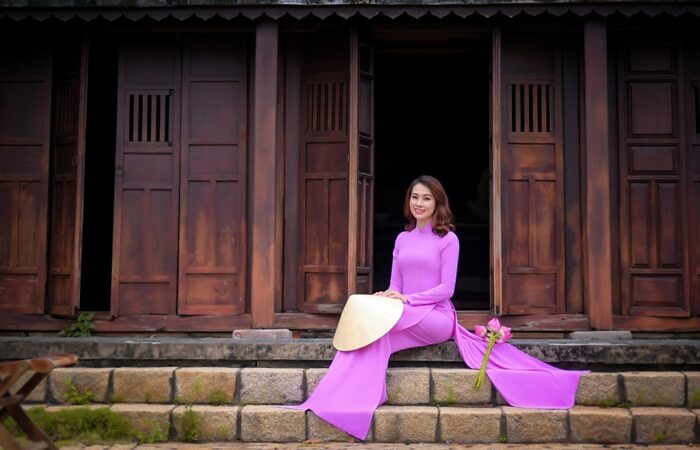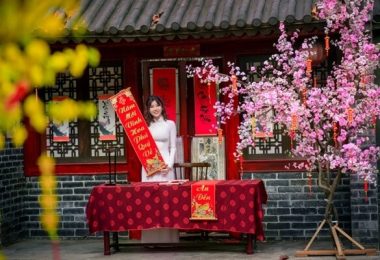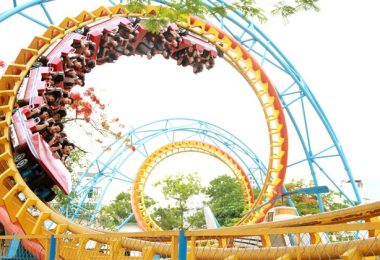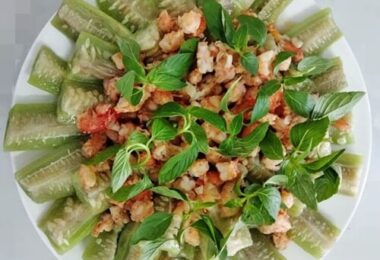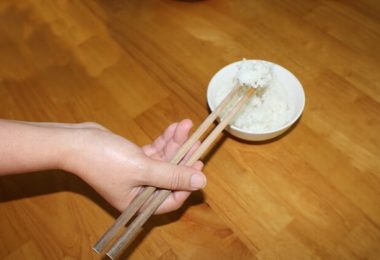Vietnamese traditional dresses are more than clothing—they are living echoes of ancestors’ creativity, shaped by centuries of history, and woven deeply into the nation’s culture.
Among these, the four-piece costume, áo dài, and áo bà ba have long been inseparable from the Vietnamese identity, familiar not only at home but also to friends around the world. Exploring the origins and meanings of these national costumes is a way to honor the rich cultural heritage of Vietnam.
1. The Elegant Four-Piece Dress of Northern Vietnam
In the North, the four-piece dress has been a hallmark of Kinh Bắc women for centuries. Once worn daily, it remained a part of women’s wardrobes well into the late 20th century. Today, it often appears on stage, during Lunar New Year celebrations, family worship, pagoda visits, or village festivals.
Its origin remains shrouded in legend rather than official records. Folklore tells that during the heroic struggles of Hai Bà Trưng (14–43 CE) against invading Han forces, women wore long dresses with golden armor beneath. Out of reverence for these heroines, the Vietnamese chose the four-piece design instead of the simpler two-piece, giving birth to the Áo Tứ Thân. Others suggest the design arose from practicality: early silk looms produced only short strips of fabric, which were stitched together into four pieces.
The four-piece dress exudes grace and gentle femininity. It is composed of four main elements: a long outer dress with four panels, a camisole, a belt, and a long skirt. The outer shirt flows elegantly with two long flaps but contains four joined pieces, without buttons or cuffs. The camisole, worn beneath, ranges from deep, subdued shades for older women to soft white, peach, or crimson for young girls, often adorned with delicate lotus embroidery or other subtle motifs. Accessories like the crow-beak scarf and the flat nón quay thào complete this iconic northern ensemble, especially at festivals.
Historically, the four-piece dress accompanied a Kinh Bắc girl in her daily life—from working in the fields to raising silkworms—graceful yet discreet, blending beauty with functionality.
Today, the sight of the four-piece dress and crow-beak scarf has become rarer, yielding to modern fashion. Yet, tucked away in many a mother’s closet are these treasured garments, preserved for special occasions and passed down through generations—a tangible link to the elegance and spirit of ancient Vietnamese attire.
2. Charming Traditional Dress in Central Vietnam: The Dreamy Purple Ao Dai of Hue
The Ao Dai of Central Vietnam is more than a costume—it is a symbol of leisure, elegance, and nobility, qualities that have earned it the honor of becoming Vietnam’s national dress. Among all its variations, the delicate purple Ao Dai Hue of Hue City captures hearts with its poetic charm, evoking the dreamy spirit of the ancient capital.
Historically, the Ao Dai has evolved through many transformations. From the early cross-collar shirt to the round-neck style, and later to the buttoned five-piece shirt with a straight collar, the costume reflects centuries of cultural refinement. In 1744, under Lord Nguyễn Phúc Khoát, men and women were ordered to wear soft long robes with pants and scarves for special occasions. Later, Emperor Minh Mạng (1820–1841) decreed that women could no longer wear skirts and must wear pants, paving the way for the modern two-piece Ao Dai.
Today’s Ao Dai consists of two main elements: the long dress and the matching pants. The dress typically falls just past the knees, with long sleeves reaching the wrists and a standing collar that frames the wearer’s grace. Its surface often showcases the artistry of Vietnamese designers, adorned with dragons, lotus flowers, or finely embroidered motifs. The pants, made from the same fabric, gently brush the ground, completing the harmonious silhouette.
The Ao Dai appears throughout Vietnamese life, from the dazzling gowns of international beauty contests to the dignified robes worn at festivals, and even the innocent white Ao Dai of schoolgirls. While modern variations—boat necks, round collars, puffy or short sleeves, and knee-length styles—bring youthful energy, the essence of the Ao Dai remains unchanged: it celebrates the femininity, elegance, and pride of Vietnamese women.
3. Rustic Traditional Dress of Ao Ba Ba in Southern Vietnam
When thinking of the Ao Ba Ba, images of the Mekong Delta immediately come to mind—gentle rivers, lush fields, and the simple, warm-hearted people who call it home. The outfit evokes the heroic women who once fought to protect their land, farmers tending their crops, and young girls gracefully rowing boats along winding rivers.
Like the northern Áo Tứ Thân, the exact origins of Ao Ba Ba are unclear, but many stories circulate. Some say it first appeared in the South during the Later Lê Dynasty (1428–1789), influenced by Champa costumes. Others believe it emerged in the early 19th century, adapted by Trương Vĩnh Ký from the clothing of Chinese Malaysians in Penang to suit local tastes. Another theory links it to the male round-neck shirt with narrow sleeves prescribed by Lê Quý Đôn in late 18th-century Central Vietnam.
The Ao Ba Ba features long sleeves and a shirt lap extending about 20 cm above the knee. Often equipped with pockets on each side, it is worn with pants, a conical hat, and a bandana, forming the iconic southern silhouette. Historically, the upper class favored bright colors—pink and blue for young women, yellow and white for older ladies—while peasants wore practical black or brown for daily work.
Few images capture the heart of Southern Vietnam like a girl in a flowing Ao Ba Ba, wearing a conical hat, gently paddling a small boat along a river. This poetic vision has inspired countless Vietnamese musicians and poets, keeping the nostalgia of the Mekong Delta alive through generations.
A touch of rustic charm woven with centuries-old traditions gives Vietnamese costumes their enduring beauty. These traditional dresses carry the most authentic traces of the nation’s history and cultural heritage. Vibrant and graceful, they are a source of pride, blooming like brilliant flowers in the rich tapestry of Vietnamese culture.

